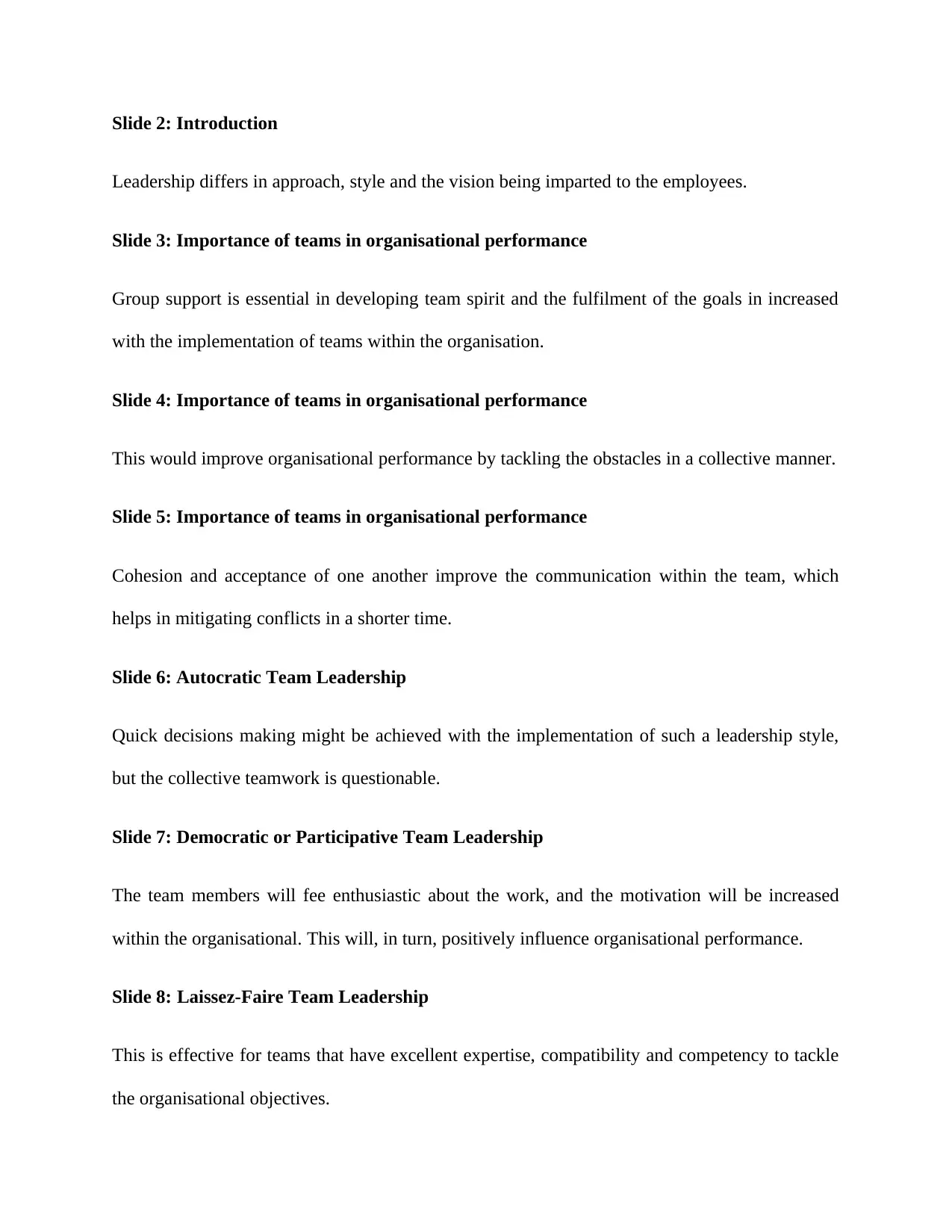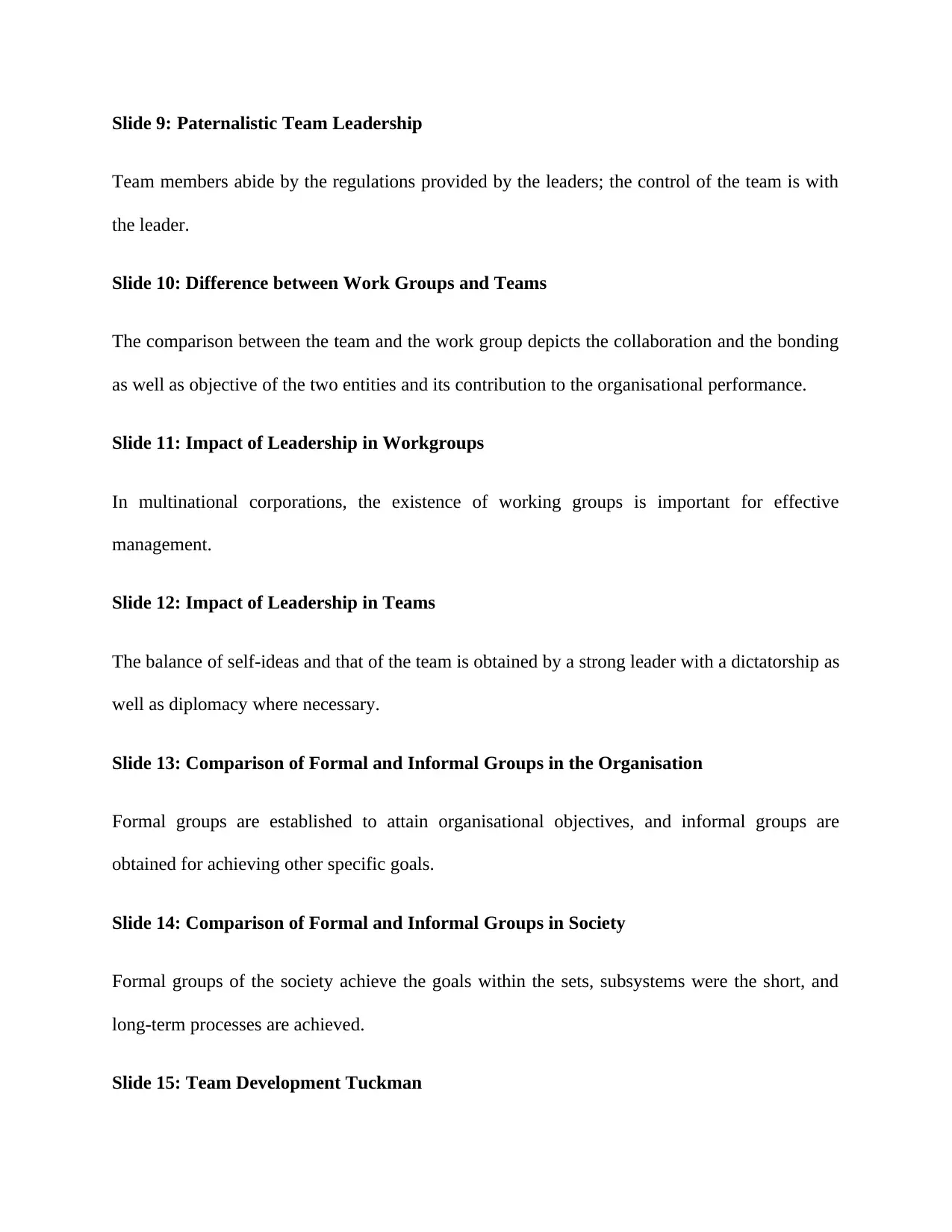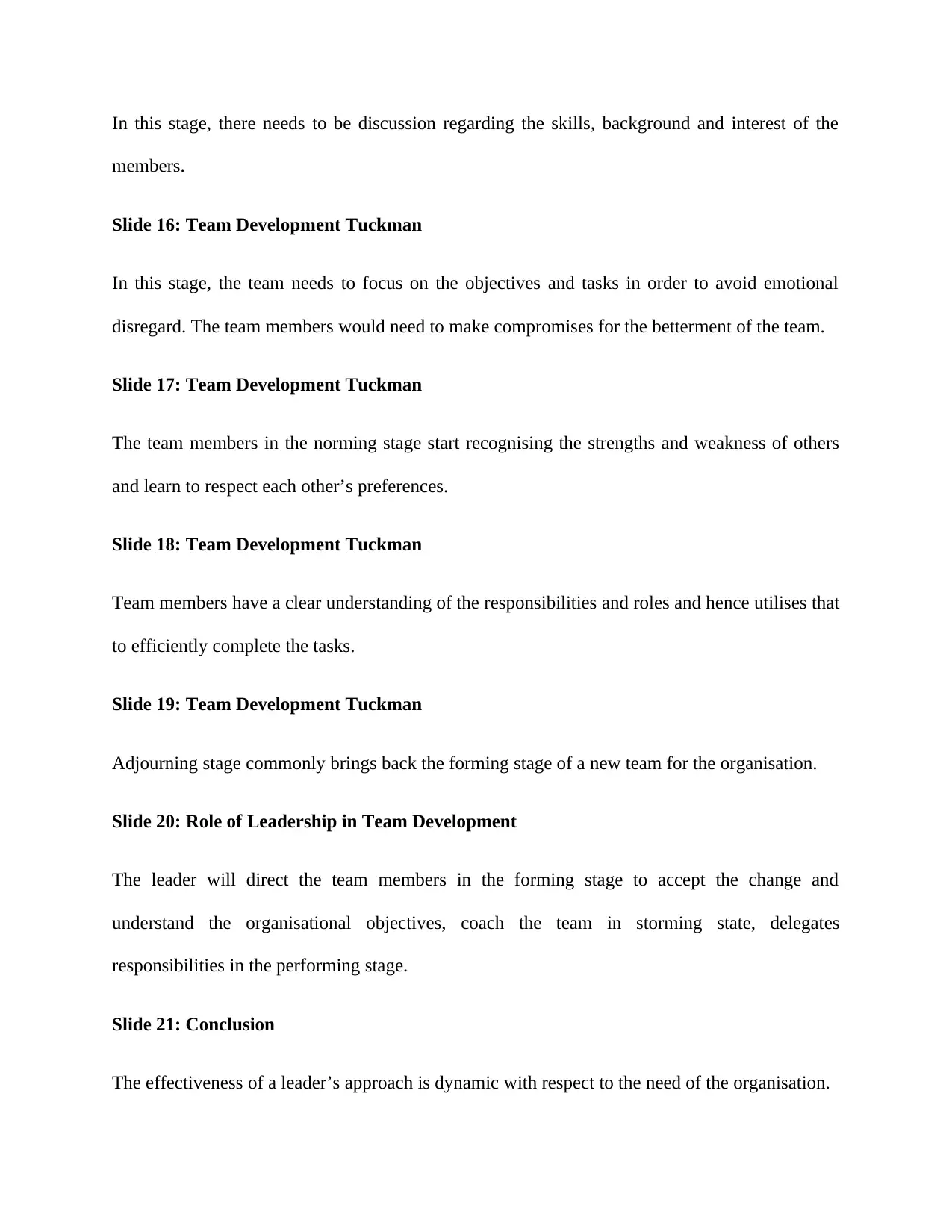Leadership and Teamwork: A Comprehensive Presentation
VerifiedAdded on 2023/01/16
|3
|604
|79
Presentation
AI Summary
This presentation delves into various aspects of leadership and teamwork within an organizational context. It explores different leadership styles, including autocratic, democratic, and laissez-faire approaches, and their impact on team dynamics and organizational performance. The presentation highlights the importance of teams in achieving organizational goals, emphasizing the significance of team cohesion and communication. It differentiates between work groups and teams, discussing the role of leadership in both settings, and examines the impact of formal and informal groups within the organization and society. Furthermore, the presentation introduces the Tuckman model of team development, detailing the stages of forming, storming, norming, performing, and adjourning, and how a leader should behave in each stage. The effectiveness of a leader's approach is dynamic with respect to the needs of the organization. This presentation provides valuable insights for students and professionals seeking to understand and improve leadership and teamwork skills.
1 out of 3









![[object Object]](/_next/static/media/star-bottom.7253800d.svg)